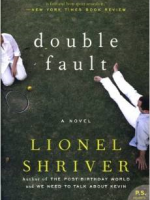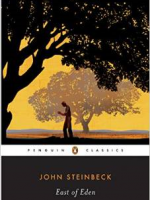 Valley of the Dolls
Valley of the Dolls
Fiction
Grove/Atlantic
1966
442

Three women seek escape as they learn about the bitterness, corruption, and falsehoods of the show-business world
I was reading a review of an art exhibition by the critic Robert Hughes the other day when a throw away side-comment about this book caught my eye. He said, “Truly bad art is always sincere. Jacqueline Susann died believing she was the peer of Charles Dickens.” Ouch.
Susann’s cult classic is more than “bad art” (Hughes must have missed out on the worst of the chick-fic to be found in today’s bookshops) but she was certainly no Charles Dickens. The Valley of the Dolls is a fascinating, and probably obligatory, read for anyone interested in the origins of women’s popular fiction. It’s a fast-paced, pill-popping romp through 1950s/60s New York seen through the eyes of three women.
Anne, Neely and Jennifer are beautiful women from very different backgrounds who meet and become best friends while they are young, idealistic and on the bottom rung of the entertainment industry ladder. Their rise to the top is fuelled by an addiction to Dolls – prescription uppers and downers – which they wash down with vodka, or when there’s none handy, swallow straight.
Set in a world of models, actresses, agents and stage shows, it’s a superficial, glitzy and glam read, and as one dust-flap commentator noted, “the wig-trashing scene [in which Neely flushes a rival star’s wig down a nightclub toilet] is outasight”.
Written in 1966, Valley of the Dolls secured Susann’s reputation as the original queen of girl-trash pulp fiction, but it has dated since then. Of course the scenery and the locations are still as vibrant as ever, but the relevance of Susann’s characters has faded with time, if indeed they ever had any real relevance.
Although Anne, Neely and Jennifer are fictional examples of early modern feminists, their attitude to men in particular (without one I’m nothing) is a million miles away from today’s definition of girl-power. They may fight for their right to work and earn money, and for a place in the sexual revolution but when they find themselves washed up and washed out, agents of their own destruction, they even turn on each other.
I was on a bit of a Stepford Wives buzz when I picked this one up and the recent success of TV’s Desperate Housewives is another tie-in that interested me. I recently saw an episode in which one of the characters took her children’s A.D.D. medicine to help her stay up late and finish the kids’ school play costumes. The fact that she also got the entire house spotless whilst on the same buzz was an added bonus. Clearly, Susann’s subject still has relevance for twenty-first century women who want to “have it all”.
I’ve labelled this one-that-got-away because I know the femmes would have had a great debate about it. Exactly what is Susann saying about women here? Its literary merits are limited, but for its cult status and as the book that began the chick-fic trend, The Valley of the Dolls has gotta be a must-read for any bookclub worth their salt. ![]()



